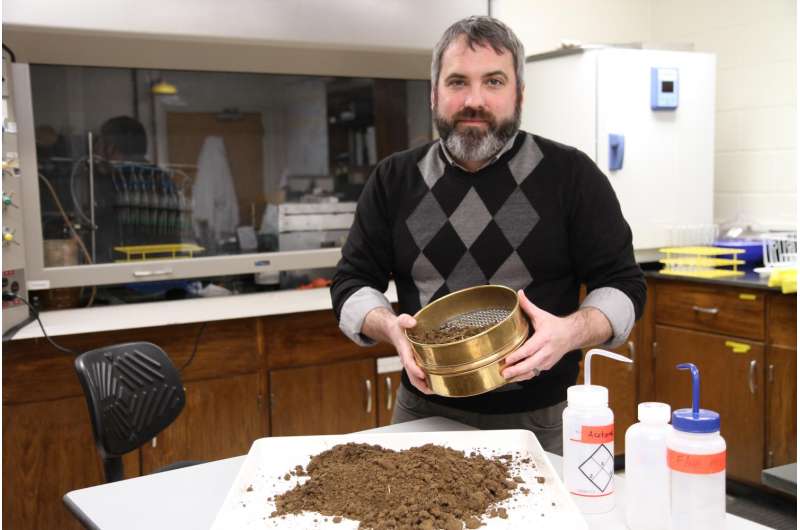Scientists zero in on biological diversity in 'poor man's rainforest'

The soil beneath our feet is not as biologically diverse as scientists previously thought, according to a research team that includes a Virginia Tech soil microbial ecologist.
Leftover DNA from dead organisms—known as "relic DNA"—has historically thrown a wrench into estimates, causing scientists to overestimate microbial diversity by as much as 55 percent. Understanding microbial diversity in soil is crucial for understanding how environmental processes like atmospheric nitrogen fixation and climate change occur.
But a team that includes Michael Strickland, an assistant professor of biological sciences in the College of Science, used a high throughput sequencing technique to determine the exact make-up of 31 soil samples from varying climates and ecosystems.
The results were published in Nature Microbiology this week.
"When we started to realize that our numbers could be off, we knew we had to find a way to take a closer look at how many species are actually there," said Strickland, who is also affiliated with the university's Global Change Center and the Fralin Life Science Institute.
Information about populations of microbes in soil is important because these organisms play critical roles in the terrestrial ecosystem and they help maintain soil fertility.
But linking the activities of microbes to soil processes is difficult. Scientists need to measure living microbes—a challenging task because DNA from dead microbes can persist in soil for years, obscuring the analysis of microbial diversity.
"This research suggests that a significant proportion of the microorganisms detected in soil using DNA based techniques are no longer living," said Ember Morrissey, an assistant professor of plant and soil sciences at West Virginia University who was not involved in the research project. "As a consequence we may need to use tools that distinguish the genetic material of living cells from the relic DNA of dead microbes in order to understand the influence of microbial 'species' on important ecosystem processes."
Paul Carini, a microbial ecophysiologist at the University of Colorado Boulder and first author of the paper, used PMA, a photoreactive dye that binds to relic DNA but does not adhere well to living cells, to distinguish viable cells from DNA debris in soil.
"Accounting for relic DNA in our analyses will help us understand the important ebb and flow of the soil microbiome and help us better understand how microbes help regulate soil fertility and make earth habitable in the face of a changing climate," said Carini.
Although soil microbial communities were found to be less diverse than previously thought, they are still pretty diverse, according to Strickland. In one gram of soil, thousands of species of microbes live, causing Strickland to deem soil as "the poor man's rainforest."
More information: Paul Carini et al. Relic DNA is abundant in soil and obscures estimates of soil microbial diversity, Nature Microbiology (2016). DOI: 10.1038/nmicrobiol.2016.242
Journal information: Nature Microbiology
Provided by Virginia Tech

















